Featured image credit: SpaceX
Liftoff Time | April 2, 2023 – 14:29 UTC | 7:29 PDT |
|---|---|
Mission Name | Transport & Tracking Layers 0-1 (0-1 meaning Tranche 0, Flight 1) |
Launch Provider | SpaceX |
Customer | Space Development Agency (SDA), a unit belonging to the United States Space Force (USSF) |
Rocket | Falcon 9 Block 5 B1075-2; 72.95-day turnaround |
Launch Location | Space Launch Complex 4 East (SLC-4E),Vandenberg Space Force Base, California, USA |
Payload mass | Unknown, but probably < 4,000 kg (~8,800 lb) |
Where did the spacecraft go? | 950 km (~590 mi) circular low-Earth orbit (LEO) at 89.5° inclination; initial: 950 km (~590 mi) x 81° |
Did they attempt to recover the first stage? | Yes |
Where did the first stage land? | Back on land, on Landing Zone 4 (LZ-4), at ~300 m from the launch pad |
Did they attempt to recover the fairings? | The fairing halves were going to be recovered from the water ~490 km (~300 mi) downrange by NRC Quest |
Were these fairings new? | No. These are reused fairings, one of them flying for the 4th time, the other, for the 6th |
This was the: | – 215th Falcon 9 launch – 149th Falcon 9 flight with a flight-proven booster – 155th re-flight of a booster – 21st re-flight of a booster in 2023 – 183rd booster landing – 109th consecutive landing (a record) – 22nd launch for SpaceX in 2023 – 39th SpaceX launch from SLC-4E – 54th orbital launch attempt of 2023 |
Where to rewatch | Official Livestream |
How Did It Go?
SpaceX launched a group of satellites for the Space Development Agency in the Transport & Tracking Layers 0-1 mission. The company used the Falcon 9 rocket in order to place eight Transport Layer satellites into orbit, and another two for the Tracking Layer. The vehicle lifted off from Space Launch Complex 4 East (SLC-4E), at Vandenberg Space Force Base, in California, United States. This was the first of two flights aimed at placing spacecraft into Tranche 0. Flight 1 was tasked with populating one of the two different orbital planes in this tranche, both at the same altitude of 950 km (~590 mi) and 89.5 degrees inclination.
What Is Transport & Tracking Layers 0-1?
A more correct name for the abbreviated version, Transport & Tracking Layers 0-1, is Transport and Tracking Layers, Tranche 0, Flight 1. It has two components in a defense, low-Earth orbit (LEO) constellation, designated the Proliferated Warfighter Space Architecture (PWSA). Each of said components is considered a layer, of which the PWSA will consist in seven:
- Transport
- Tracking
- Battle Management
- Custody
- Emerging Capabilities
- Navigation
- Support
As evidenced in the names, the different layers will carry out specific tasks. Additionally, these layers are subdivided into a number of tranches, or groups. Each of them will have potentially increasing capabilities, as well as a growing number of satellites, and is expected to see launches every two years. Finally, tranches are populated with satellites by means of a number of launches (or flights), depending on the selected rocket and its cargo capacity. Tranche 0 represents a technology demonstration through a minimum viable product with enough performance to allow for testing, and exploration of the possibilities it offers. As such, it will feature two orbital planes with satellites in each of them, at 950 km (~590 mi) altitude and 89.5 degrees inclination.
Transport Layer
This will be the backbone of the mentioned architecture, the PWSA, as Transport Layer designates the group of spacecraft charged with data-relaying activities. In other words, inside this constellation they will provide communications services. Populating Tranche 0 of this layer, there will be 20 spacecraft — 10 manufactured by Lockheed Martin and another 10, by York Space Systems. These contractors were awarded by the SDA with USD 187.5M, and USD 94M respectively back in 2020.
In each of these groups of 10, some of the satellites will be provided with four optical (laser) cross-links — group A — while the remaining ones, with two cross-links and two downlinks — group B. This is how satellites are able to communicate among peers in the same layer (even if they are built by different companies), with satellites in other layers, as well as with defense systems on the surface: land, sea, or even air.
| Company – Group | Flight 1 | Flight 2 |
| York Space Systems – A | 5 | 1 |
| York Space Systems – B | 3 | 1 |
| Lockheed Martin – A | – | 7 |
| Lockheed Martin – B | – | 3 |
Tracking Layer
On the other hand, the Tracking Layer will operate quite differently. In this case, the satellites in it will remain vigilant for possible detection of ballistic missiles, and, especially, of hypersonic glide missiles, heading toward the US. These follow much lower trajectories, and can maneuver, which prevents the DoD’s satellites sitting in geostationary orbit (GEO) from responding in time.
In order to do their job, these spacecraft will have a wide field-of-view (WFOV) overhead persistent infrared (OPIR) sensor. Once a missile is targeted by it, the satellite will relay the information of its location and its trajectory through a secure path. The spacecraft will use its optical cross-links, to talk to the Transport Layer. In turn, this one will talk to whichever asset is needed, e.g. an interceptor.
Back in 2020, the SDA bought the first eight satellites for this layer: four contracted to L3Harris, for USD 193.50M; another four, to a SpaceX-Leidos team, for USD 149M — the first time the U.S. military has announced an order of satellites from SpaceX. The former developed a new bus in-house, while SpaceX based its satellites on the Starlink bus. In this flight, only two satellites built by the latter flew to space.
Space Development Agency
This agency was created in 2019 with the goal of leveraging from the commercial side of the space market, and all of the innovation taking place there regarding small satellites. The idea is to make use of this, and apply this new model to military systems. In particular, it is of priority interest to the SDA, and to the Pentagon before it, to deploy a constellation of infrared sensors in LEO. Potential adversaries like Russia and China have already at least tested hypersonic missiles, which is why it is important to the US to have an adequate defense system.
This is a departure from traditional procurement in military space, because of the use of the two-year spiral growth. That is, every two years another batch of satellites should be put in orbit. These will also, most likely, be provided by different vendors. In this way, it is possible to shorten the time needed to give warfighters a useful tool. By contrast, the DoD would take a decade to loft a spacecraft, as it would aim to provide “the perfect” solution. Additionally, sending up satellites more often means a new technological development can be put into practice much earlier.
The SDA aims at having global, operational coverage through these two layers by 2025, when Tranche 1 is orbited. This will be a proliferated constellation, meaning it is difficult for an enemy to take it down, due to its size. On the other hand, the SDA’s Tracking Layer will feed the Missiles Defense Agency’s (MDA) Hypersonic and Ballistic Tracking Space Sensor (HBTSS), which will operate medium field-of-view (MFOV) infrared satellites. These, because of their narrower field of view, will be able to feed a ground-based interceptor with adequate information.
Launch Campaign, Delays, Future
At the end of 2020, SpaceX was awarded a launch contract for USD 150.4M to carry out the launches related to Transport & Tracking Layers, Tranche 0.
It turned out that Flight 1 of Tranche 0 was comprised of eight satellites from the Transport Layer, and another two from the Tracking Layer. This first flight was expected back in September 2022, but a number of delays took place. Many of them were related to the shortage in microelectronic components, and other supply chain issues, stemming from the pandemic. Present plans were to launch before the end of March, though out of caution, it was postponed to the very first days of April. There is another launch scheduled for June.
Contracts have already been awarded to Lockheed Martin (USD 700M), Northrop Grumman (USD 692M), and York Space Systems (USD 382M) to build each 42 satellites for Tranche 1 in the Transport Layer, expected for 2025. Similarly, for the Tracking Layer, Tranche 1: L3Harris (USD 700M), will build 14 satellites, as well as Northrop Grumman (USD 617M).
What Is Falcon 9 Block 5?
The Falcon 9 Block 5 is SpaceX’s partially reusable two-stage medium-lift launch vehicle. The vehicle consists of a reusable first stage, an expendable second stage, and, when in payload configuration, a pair of reusable fairing halves.
First Stage
The Falcon 9 first stage contains 9 Merlin 1D+ sea-level engines. Each engine uses an open gas generator cycle and runs on RP-1 and liquid oxygen (LOx). Each engine produces 845 kN of thrust at sea level, with a specific impulse (ISP) of 285 seconds, and 934 kN in a vacuum with an ISP of 313 seconds. Due to the powerful nature of the engine, and the large amount of them, the Falcon 9 first stage is able to lose an engine right off the pad, or up to two later in the flight, and be able to successfully place the payload into orbit.
The Merlin engines are ignited by triethylaluminum and triethylborane (TEA-TEB), which instantaneously burst into flames when mixed in the presence of oxygen. During static fire and launch the TEA-TEB is provided by the ground service equipment. However, as the Falcon 9 first stage is able to propulsively land, three of the Merlin engines (E1, E5, and E9) contain TEA-TEB canisters to relight for the boost back, reentry, and landing burns.
Second Stage
The Falcon 9 second stage is the only expendable part of the Falcon 9. It contains a singular MVacD engine that produces 992 kN of thrust and an ISP of 348 seconds. The second stage is capable of doing several burns, allowing the Falcon 9 to put payloads in several different orbits.
For missions with many burns and/or long coasts between burns, the second stage is able to be equipped with a mission extension package. When the second stage has this package it has a grey strip, which helps keep the RP-1 warm, an increased number of composite-overwrapped pressure vessels (COPVs) for pressurization control, and additional TEA-TEB.
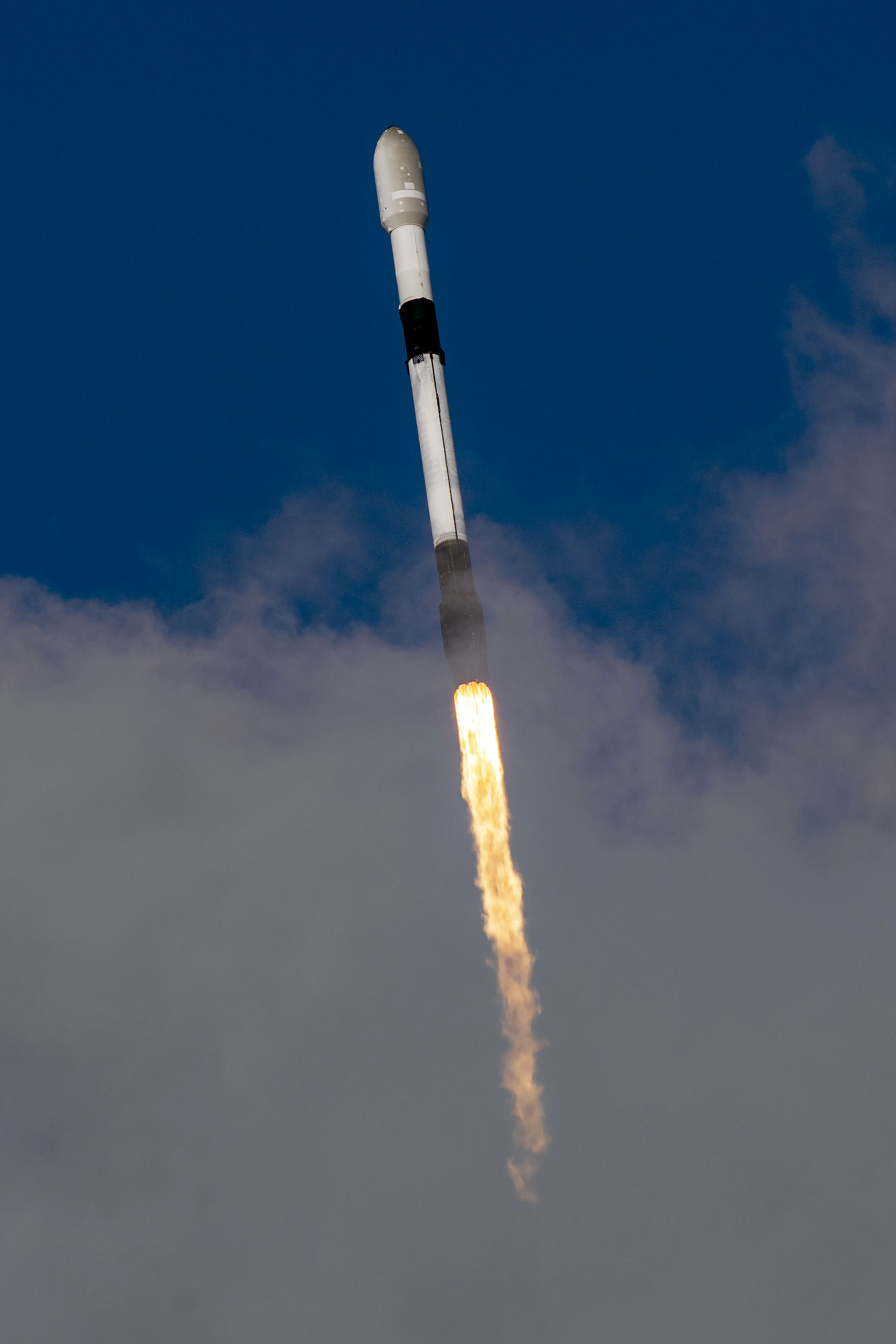
Falcon 9 Booster
The booster supporting the Transport & Tracking Layers 0-1 mission was B1075-2; as the name implies, the booster has flown one previous time. The booster’s designation changed to B1075-3 upon successful landing.
| B1075’s previous missions | Launch Date (UTC) | Turnaround Time (Days) |
|---|---|---|
| Starlink Group 2-4 | January 19, 2023, 15:43 | N/A |
| Transport & Tracking Layers 0-1 | April 2, 2023 14:29 | 72.95 |
Following stage separation, the Falcon 9 will conduct three burns. These burns aim to softly touch down the booster on SpaceX’s Landing Zone 4 (LZ-4).
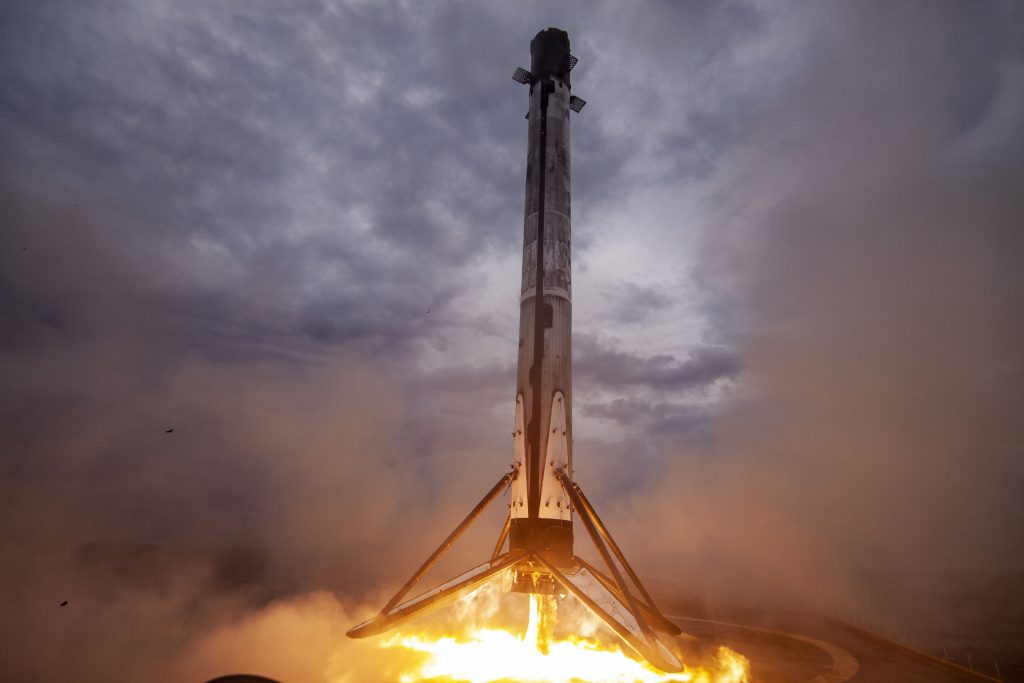
Falcon 9 Fairings
The Falcon 9’s fairing consists of two dissimilar reusable halves. The first half (the half that faces away from the transport erector) is called the active half, and houses the pneumatics for the separation system. The other fairing half is called the passive half. As the name implies, this half plays a purely passive role in the fairing separation process, as it relies on the pneumatics from the active half.
Both fairing halves are equipped with cold gas thrusters and a parafoil which are used to softly touch down the fairing half in the ocean. SpaceX used to attempt to catch the fairing halves, however, at the end of 2020 this program was canceled due to safety risks and a low success rate. On Starlink Group 5-5, SpaceX successfully recovered the fairing halves from the water with their recovery vessel NRC Quest.
In 2021, SpaceX started flying a new version of the Falcon 9 fairing. The new “upgraded” version has vents only at the top of each fairing half, by the gap between the halves, whereas the old version had vents placed spread equidistantly around the base of the fairing. Moving the vents decreases the chance of water getting into the fairing, making the chance of a successful scoop significantly higher.
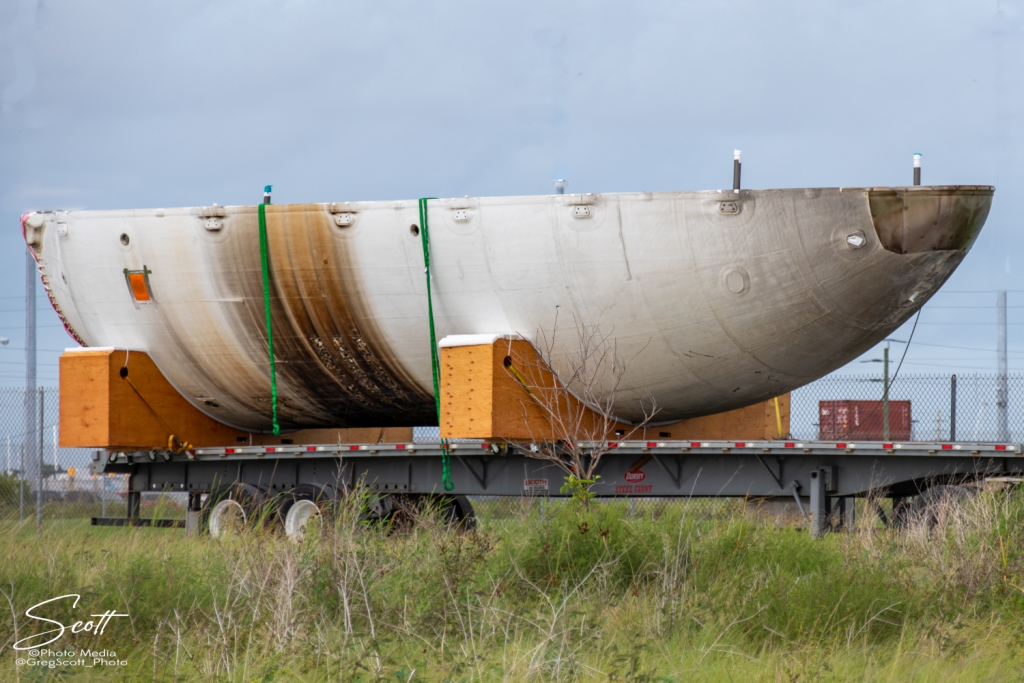

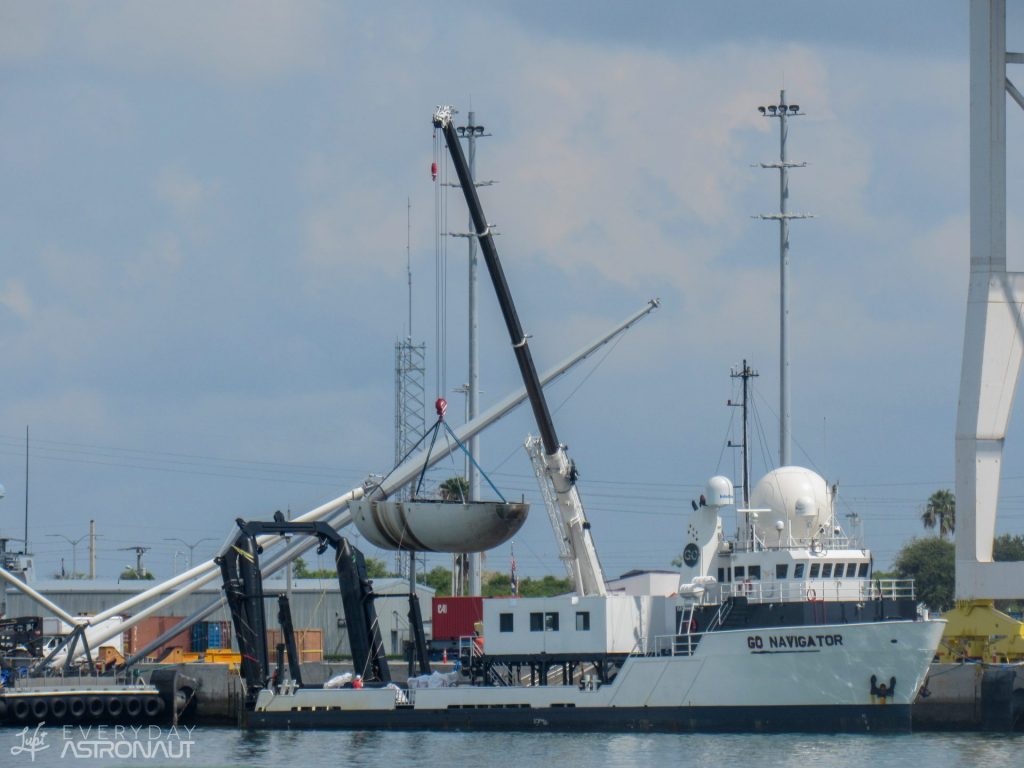
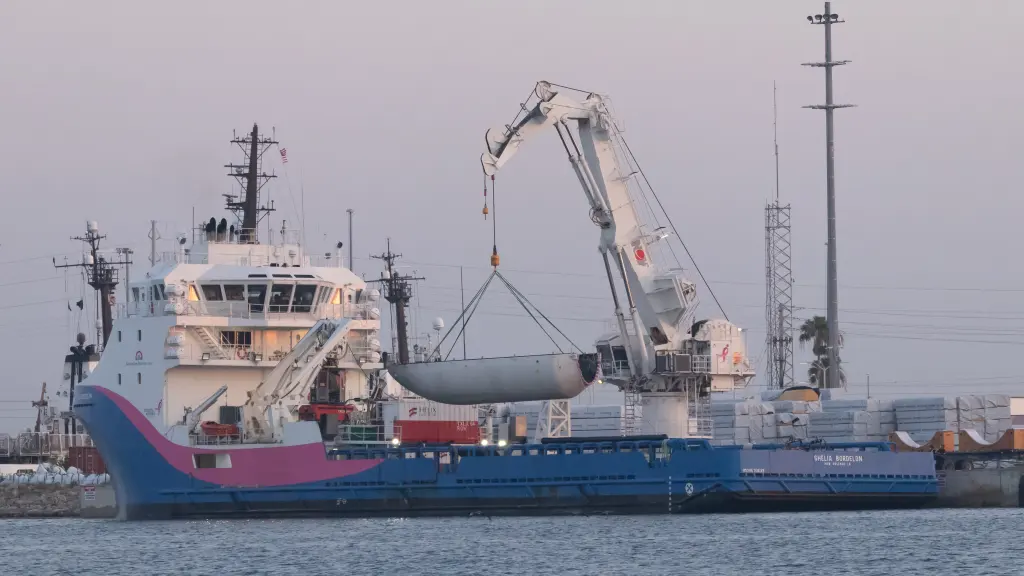
Transport & Tracking Layers 0-1, Countdown
All times are approximate
| HR/MIN/SEC | EVENT |
|---|---|
| 00:38:00 | SpaceX Launch Director verifies go for propellant load |
| 00:35:00 | RP-1 (rocket grade kerosene) loading underway |
| 00:35:00 | 1st stage LOX (liquid oxygen) loading underway |
| 00:16:00 | 2nd stage LOX loading underway |
| 00:07:00 | Falcon 9 begins engine chill prior to launch |
| 00:01:00 | Command flight computer to begin final prelaunch checks |
| 00:01:00 | Propellant tank pressurization to flight pressure begins |
| 00:00:45 | SpaceX Launch Director verifies go for launch |
| 00:00:03 | Engine controller commands engine ignition sequence to start |
| 00:00:00 | Falcon 9 liftoff |
Transport & Tracking Layers 0-1, Launch and Landing
| HR/MIN/SEC | EVENT |
|---|---|
| 00:01:12 | Max Q (moment of peak mechanical stress on the rocket) |
| 00:02:17 | 1st stage main engine cutoff (MECO) |
| 00:02:20 | 1st and 2nd stages separate |
| 00:02:28 | 2nd stage engine starts (SES-1) |
| 00:02:33 | Boostback burn start |
| 00:03:02 | Fairing deployment |
| 00:03:28 | Boostback burn end |
| 00:06:09 | 1st stage entry burn start |
| 00:06:25 | 1st stage entry burn complete |
| 00:07:15 | 1st stage landing burn start |
| 00:07:48 | 1st stage landing |
Because of the nature of this mission, the complete timeline after liftoff is not available.




